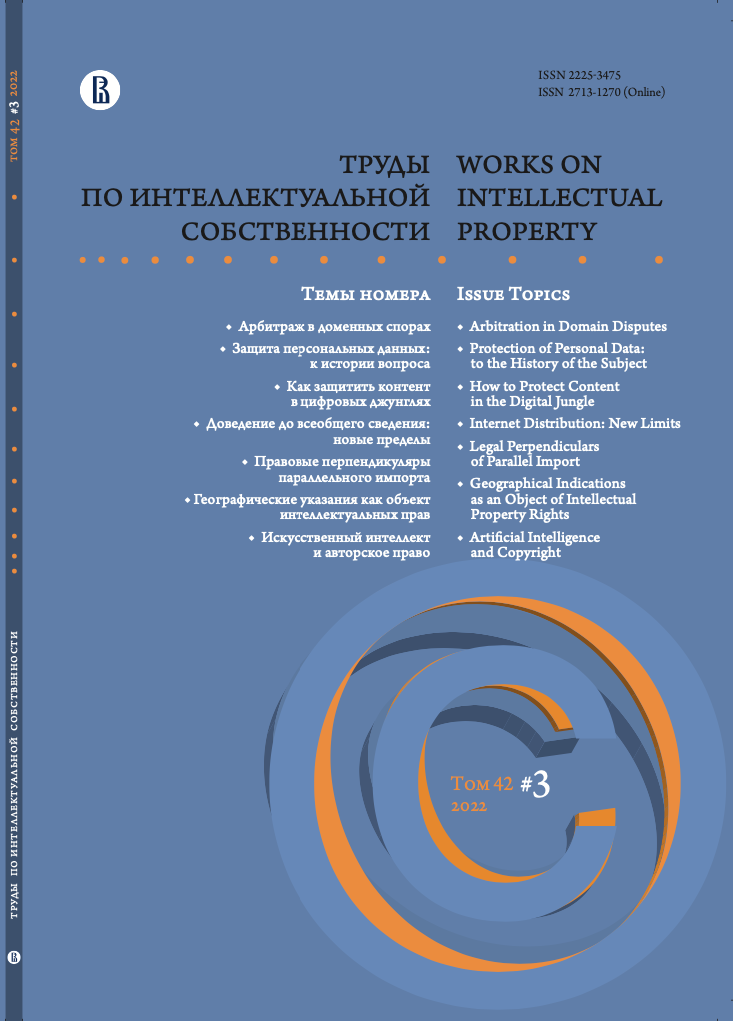THE INSTITUTION OF AUTHORSHIP AND ARTIFICIAL INTELLIGENCE
Abstract
The article deals with the problem of determining the author for those results of intellectual activity that are created with the participation of artificial intelligence. The purpose of this work is to demonstrate on certain cases the author’s role in the creation of intellectual property. For clarity, cases are selected from the field of fine arts. The article discusses the various techniques used by artists, compared them with the artificial intelligence application to create art objects. In addition, this paper analyzes the cases when the author qualified his work as creative act and the cases when the author, despite the result obtained, defined his work as not having a creative character. The demonstration of certain cases clearly illustrates that the creator’s opinion determines whether object is an art-work and whether his work is an creative act. The article also demonstrates that the artificial intelligence application in creating the result of intellectual activity does not differ from other techniques. These circumstances confirm that only a person can be the author. In addition, the article briefly reveals the essence of intellectual rights and the disinterest, the absence of any benefit for artificial intelligence in possessing these rights. Due to the fact that law is not something objective, but invented by and for humans, only humans can benefit from legal institutions. For this reason also there is no sense to recognise the authorship of artificial intelligence. Because of these circumstances, artificial intelligence is only a tool in the hands of the author.


